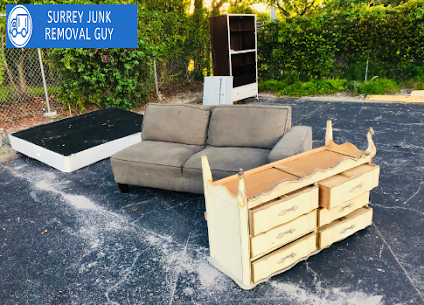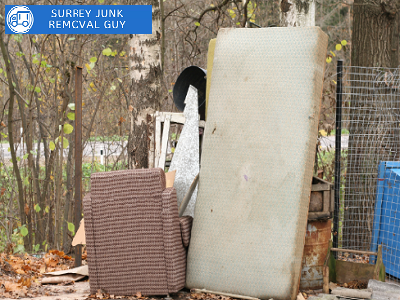Moving to a new house can be an exciting and overwhelming experience. However, the thought of having to pack up and transport all your furniture can often add a lot of stress to the process. But fear not, with some careful planning and these five tips, you can have a stress-free furniture removal in Surrey.
Create a Checklist
The first step to stress-free furniture removal is to create a detailed checklist. This will help you keep track of everything that needs to be done and ensure that you don’t forget any important tasks. Start by listing all the furniture in your home and then divide them into categories based on their size and fragility. This will give you a better understanding of how to pack and load them onto the moving truck.
Step-by-Step Guide to Creating a Checklist

- Define the Purpose: Clearly articulate the goal or objective the checklist is intended to achieve. This ensures that the checklist stays focused and relevant.
- Identify Tasks or Items: List down all the tasks, items, or actions that need to be included in the checklist. Each item should be specific and actionable.
- Organize Sequentially or by Priority: Arrange the items in a logical order, whether chronologically or by priority. This helps in efficiently executing the tasks in the checklist.
- Include Necessary Details: Provide clear instructions or additional information for each item if needed. This ensures that whoever uses the checklist understands what needs to be done.
- Add Checkboxes or Markers: Create a checkbox or marker next to each item for tracking completion. This makes it easy to see what has been accomplished and what remains outstanding.
- Consider Timeframes or Deadlines: If applicable, include deadlines or timeframes for each task. This helps in managing time effectively and meeting deadlines.
- Review and Test the Checklist: Before finalizing, review the checklist to ensure all necessary items are included and the instructions are clear. Test it by going through the checklist step-by-step to identify any potential issues.
- Make Adjustments if Necessary: Based on the review and testing, make any adjustments or improvements to the checklist. This ensures it is practical and effective for its intended purpose.
- Finalize and Distribute: Once satisfied with the checklist, finalize the document and distribute it to relevant stakeholders or team members. Ensure everyone who needs to use the checklist has access to it.
- Periodically Update: Regularly review and update the checklist as needed to reflect any changes in procedures, tasks, or goals. This keeps the checklist current and relevant over time.
- Use Feedback for Improvement: Gather feedback from users of the checklist to identify areas for improvement. Use this feedback to refine the checklist for better usability and effectiveness.
- Store and Archive: Store the checklist in a secure and accessible location for future reference. Consider archiving older versions for historical purposes if necessary.
By following these steps, you can create a comprehensive checklist that is clear, effective, and easy to use for achieving your goals or completing tasks efficiently.
Start Packing Early
Packing can be a time-consuming task, and leaving it until the last minute can add a lot of stress to your move. Therefore, it’s crucial to start packing your furniture well in advance. Begin with the items that you won’t need on a daily basis, such as out-of-season clothes and decorative pieces. This will give you enough time to carefully wrap and pack them without rushing.
Use High-Quality Packing Materials
Investing in high-quality packing materials is essential to ensure the safety of your furniture during the move. Use sturdy boxes, bubble wrap, and packing tape to secure your items. If possible, try to disassemble any large furniture pieces to make them easier to transport. Additionally, make sure to label each box with its contents and the room it belongs to. This will save you a lot of time and effort when unpacking at your new place.
Hire a Professional Removal Service
Trying to move heavy and bulky furniture on your own can not only be physically exhausting but also risky. Instead, consider hiring a professional removal service in Surrey to handle the job for you. Not only do they have the expertise and equipment to lift and transport your furniture safely, but they can also take care of the packing and unpacking process. This will free up your time and give you peace of mind knowing that your furniture is in good hands.
Create a Plan for Unloading
Once you reach your new home, it’s essential to have a plan for unloading and positioning your furniture. If possible, visit the new property beforehand and measure the doorways and hallways to ensure your furniture can fit through without any issues. This will save you from the hassle of trying to maneuver large pieces of furniture when you’re already exhausted from the move. Additionally, have a floor plan in hand to help the movers know where each piece of furniture should go. This will save you time and prevent any confusion during the unpacking process.
Conclusion
In conclusion, moving furniture can be a daunting task, but with some careful planning and by following these tips, you can make the process stress-free and smooth. Remember to start early, use high-quality packing materials, enlist the help of professionals, and have a plan for unloading. Contact us today at Surrey Junk Removal Guy located at 17148 104 Ave, Surrey, BC V4N 4R6, Canada. By doing so, you can have a successful furniture removal in Surrey and start enjoying your new home sooner.

